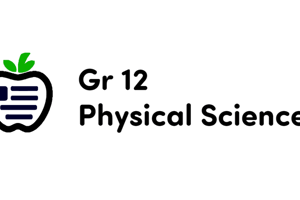Podcast
Questions and Answers
What effect does increasing temperature have on chemical reaction rates?
What effect does increasing temperature have on chemical reaction rates?
- It slows down the reaction.
- It speeds up the reaction by increasing particle collisions. (correct)
- It causes the reaction to stop.
- It has no effect on the reaction.
Which of the following best describes a catalyst?
Which of the following best describes a catalyst?
- A substance that slows down a reaction.
- A substance that changes the reaction products.
- A substance that is used up in a reaction.
- A substance that speeds up a reaction without being consumed. (correct)
What happens to a system at equilibrium if the concentration of reactants is increased?
What happens to a system at equilibrium if the concentration of reactants is increased?
- The equilibrium shifts to produce more products. (correct)
- The equilibrium remains unchanged.
- The reaction occurs more slowly.
- The reaction stops completely.
Which pH value indicates a basic solution?
Which pH value indicates a basic solution?
What is the result of a neutralization reaction between an acid and a base?
What is the result of a neutralization reaction between an acid and a base?
What role does surface area play in reaction rates?
What role does surface area play in reaction rates?
Which of the following is an example of an acid?
Which of the following is an example of an acid?
What happens to a ball at its highest point during vertical projectile motion?
What happens to a ball at its highest point during vertical projectile motion?
What is chemical equilibrium?
What is chemical equilibrium?
In the context of work, what does the formula W = Fd cos(θ) represent?
In the context of work, what does the formula W = Fd cos(θ) represent?
What is the unit of power in the context of work and energy?
What is the unit of power in the context of work and energy?
How does the pitch of sound change as a moving ambulance approaches an observer?
How does the pitch of sound change as a moving ambulance approaches an observer?
What effect does temperature have on the rate of chemical reactions?
What effect does temperature have on the rate of chemical reactions?
What is the correct formula for calculating kinetic energy?
What is the correct formula for calculating kinetic energy?
In the Doppler effect, what happens to the sound waves when the source of sound moves away from the observer?
In the Doppler effect, what happens to the sound waves when the source of sound moves away from the observer?
If you apply a force of 15 N to move an object 3 meters, what is the work done?
If you apply a force of 15 N to move an object 3 meters, what is the work done?
Flashcards
Reaction Rate
Reaction Rate
The speed at which a chemical reaction takes place.
Temperature's Impact on Rate
Temperature's Impact on Rate
Higher temperature means particles move faster, leading to more collisions and a faster reaction.
Concentration's Impact on Rate
Concentration's Impact on Rate
More reactants in a given volume means more chances for collisions, leading to a faster reaction.
Surface Area's Impact on Rate
Surface Area's Impact on Rate
Signup and view all the flashcards
Catalysts
Catalysts
Signup and view all the flashcards
Chemical Equilibrium
Chemical Equilibrium
Signup and view all the flashcards
Le Chatelier's Principle
Le Chatelier's Principle
Signup and view all the flashcards
Acids
Acids
Signup and view all the flashcards
Vertical Projectile Motion
Vertical Projectile Motion
Signup and view all the flashcards
Acceleration in Vertical Projectile Motion
Acceleration in Vertical Projectile Motion
Signup and view all the flashcards
Definition of Work
Definition of Work
Signup and view all the flashcards
Energy
Energy
Signup and view all the flashcards
Kinetic Energy
Kinetic Energy
Signup and view all the flashcards
Potential Energy
Potential Energy
Signup and view all the flashcards
Power
Power
Signup and view all the flashcards
Doppler Effect
Doppler Effect
Signup and view all the flashcards
Study Notes
Vertical Projectile Motion
- Objects moving under gravity's influence.
- At highest point, velocity is zero.
- Gravity accelerates downwards at a constant rate.
- Equation of motion: v = u + at (where v is final velocity, u is initial velocity, a is acceleration, and t is time).
- At highest point, v = 0.
Work, Energy, and Power
- Work is done when a force moves an object.
- Formula: W = Fd cosθ (where W is work, F is force, d is distance, and θ is the angle between force and motion).
- Energy is the capacity to do work.
- Kinetic Energy (KE): Energy of motion, Formula: KE = 1/2 mv² (where m is mass, v is velocity).
- Potential Energy (PE): Energy due to position, Formula: PE = mgh (where m is mass, g is gravity, h is height).
- Power is the rate of doing work. Formula: P = W/t (where P is power, W is work, and t is time).
Doppler Effect
- Change in wave frequency due to relative motion of source and observer.
- Common with sound.
- Approaching source: Higher pitch (compressed waves).
- Receding source: Lower pitch (stretched waves).
- Formula: f' = f (v ± vo) / (v ± vs) (where f' is observed frequency, f is actual frequency, v is wave speed, vo is observer speed, and vs is source speed).
Rates of Reactions
- Reaction speed influenced by various factors.
- Higher temperature increases particle movement and collisions, leading to faster reaction rates.
- Higher concentration leads to more frequent collisions, increasing reaction speed.
- Larger surface area provides more collision points, speeding up reactions.
- Catalysts accelerate reactions without being consumed.
Chemical Equilibrium
- Reversible reactions reach equilibrium when forward and reverse reactions occur at equal rates.
- Example: Perfume in a sealed bottle (evaporation and condensation).
- Le Chatelier's Principle: System adjusts in response to disturbances to re-establish equilibrium.
- Addition of more reactant will shift the equilibrium in the direction of product.
Acids and Bases
- Acids release H+ ions in water.
- Bases accept H+ ions.
- pH scale measures acidity/basicity.
- pH < 7: Acidic.
- pH > 7: Basic.
- pH = 7: Neutral.
- Neutralization: Reaction between acid and base forming water and salt.
Studying That Suits You
Use AI to generate personalized quizzes and flashcards to suit your learning preferences.




